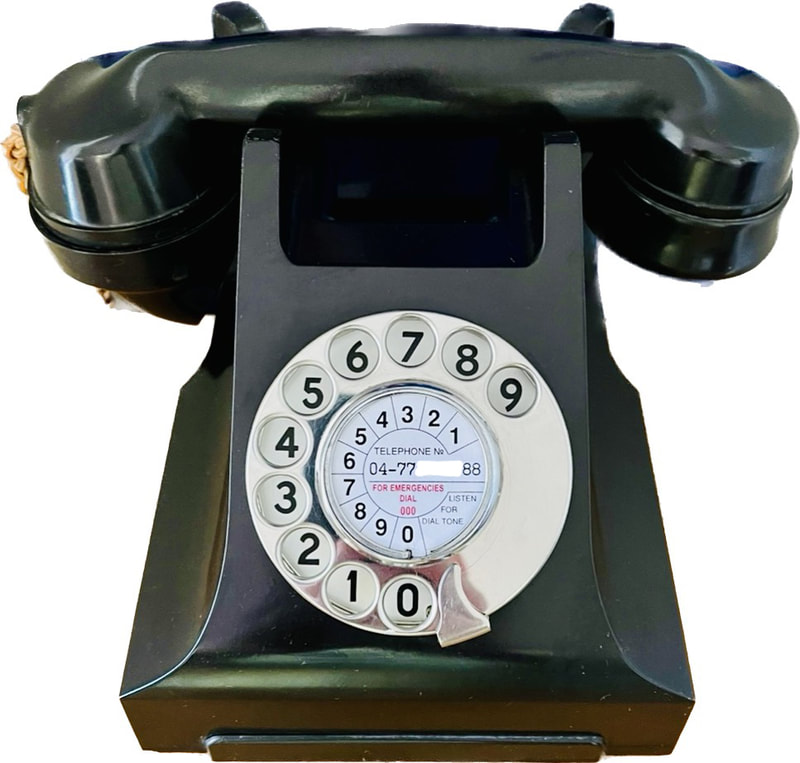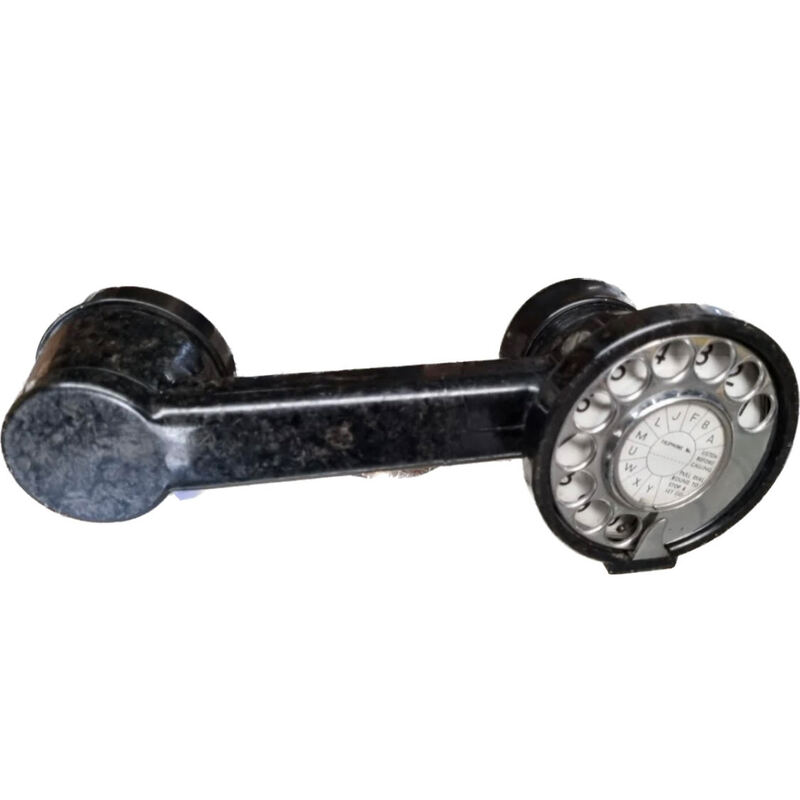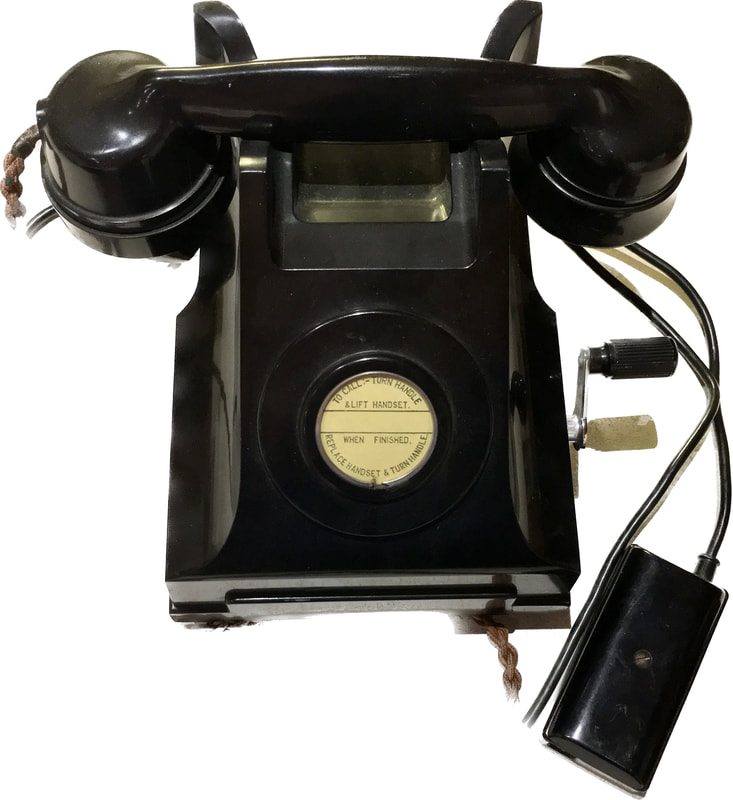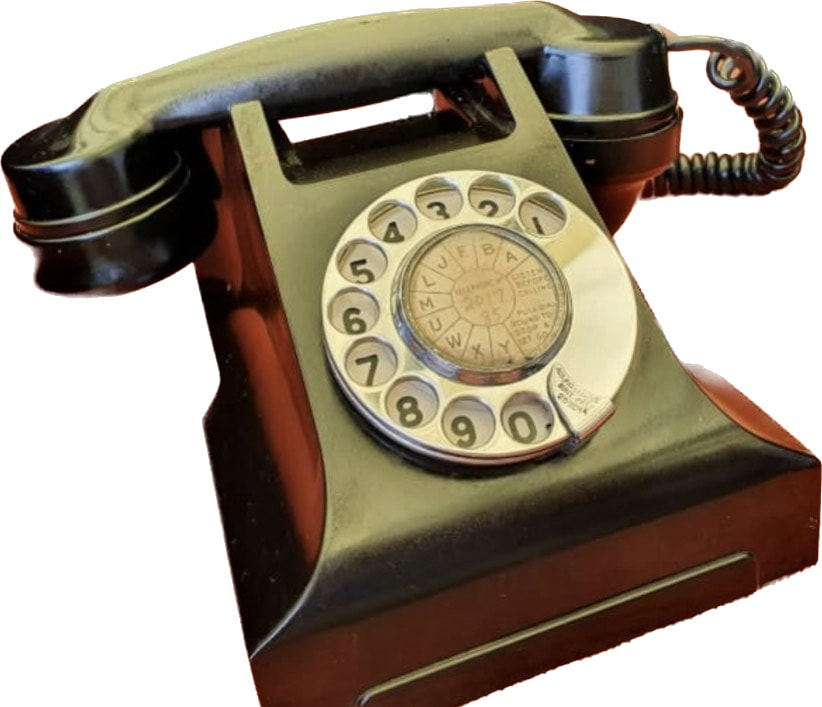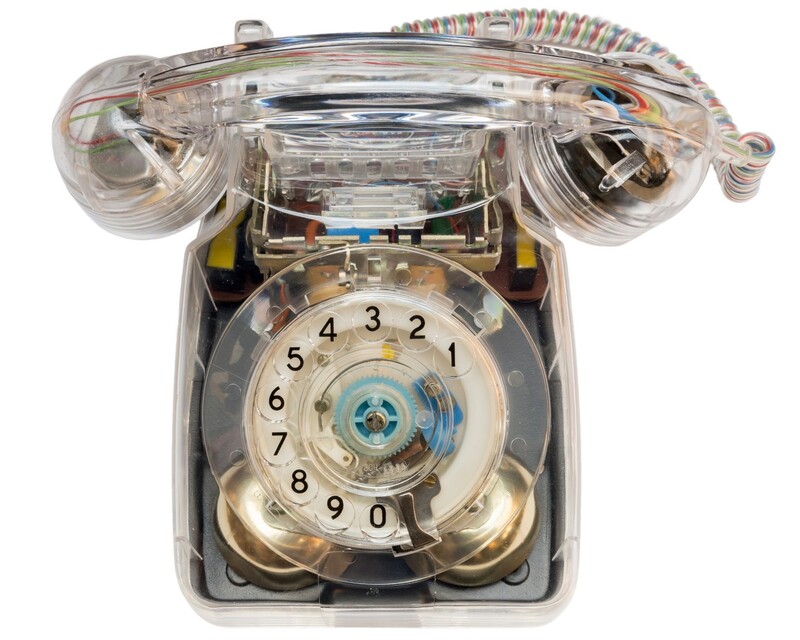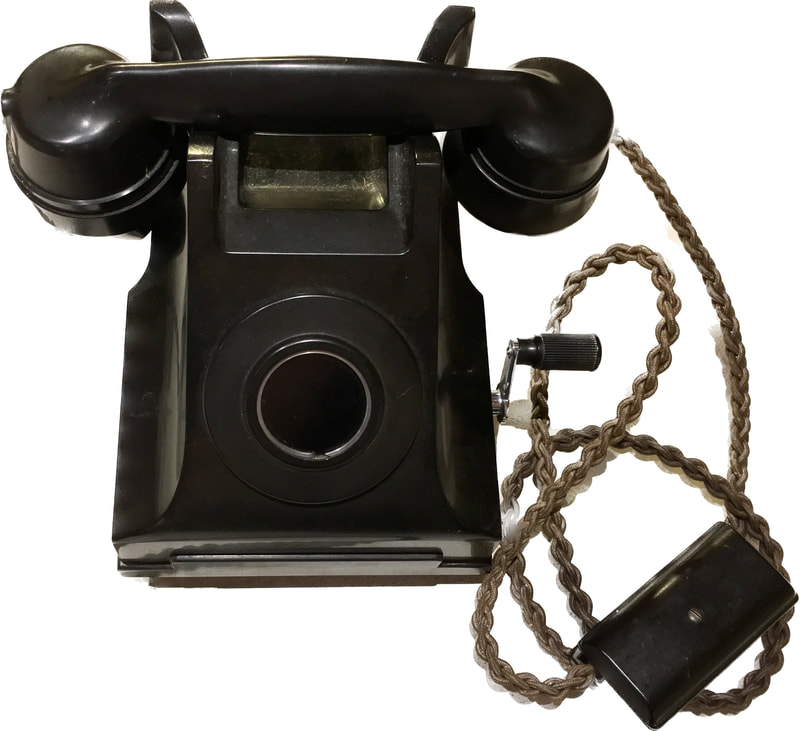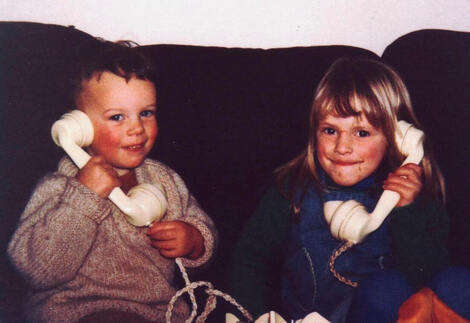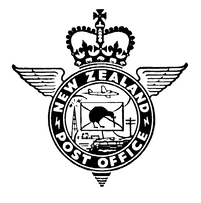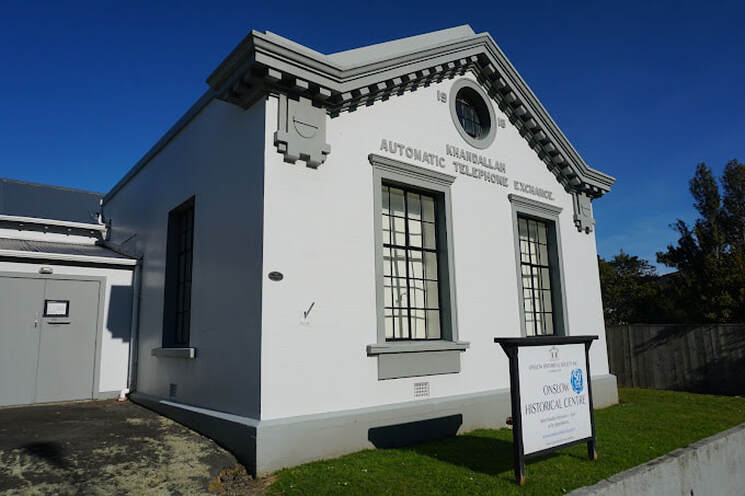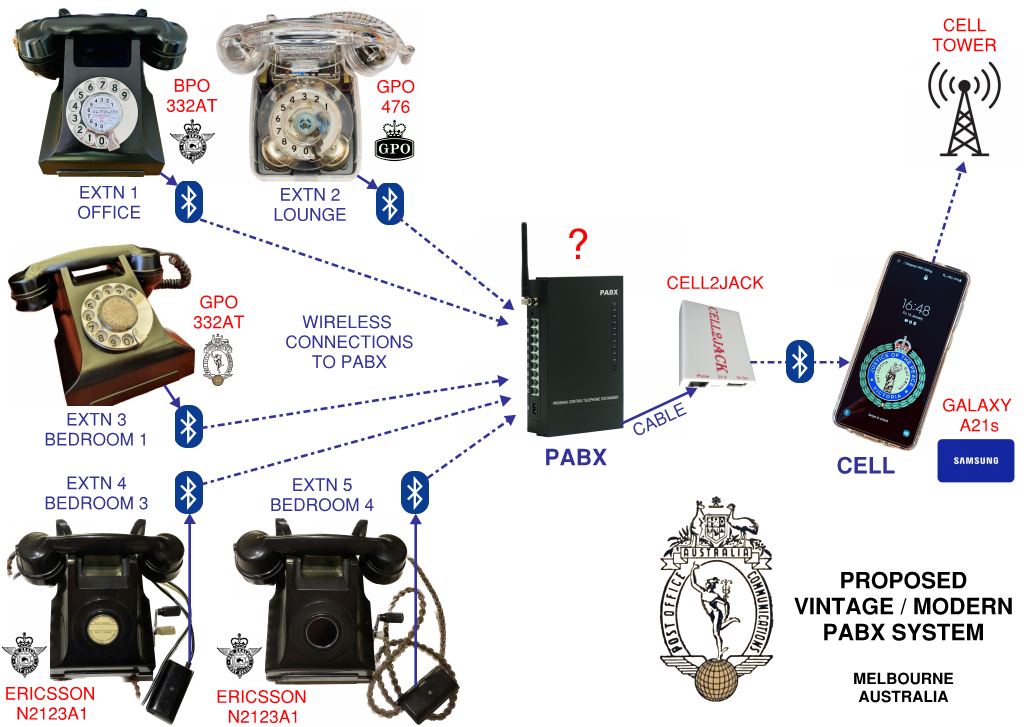I have a bit of a soft-spot for vintage telephones. Actually, old school stuff in general.
However, I can't be bothered mucking about with classic cars, or renovating an old house, so I occasionally tinker with vintage phones instead.
You see, both my parents worked in telephones, my father was out on the road as a telephone technician, and my mother worked as a technician at the local telephone exchange.
You see, both my parents worked in telephones, my father was out on the road as a telephone technician, and my mother worked as a technician at the local telephone exchange.
My cousin and I using connected BPO 332 phones, Wellington NZ, July 1979
On deregulation of the New Zealand Post Office in the late 1980s, Dad became a telecommunications contractor.
In the 1990s, I joined his company as an assistant technician, for 5 years it was my school holiday job, I think he wanted me to take over the business.
Thank goodness I decided to work in architecture though, as there's not too many landlines around these days!
Below are some useful NZPO manuals for telephone technicians from a bygone era. I've put them below as a reference because, well, why not?
You can even download them on your telephone! (there's a lot of data here, so please make sure you are on a wifi network first)
In the 1990s, I joined his company as an assistant technician, for 5 years it was my school holiday job, I think he wanted me to take over the business.
Thank goodness I decided to work in architecture though, as there's not too many landlines around these days!
Below are some useful NZPO manuals for telephone technicians from a bygone era. I've put them below as a reference because, well, why not?
You can even download them on your telephone! (there's a lot of data here, so please make sure you are on a wifi network first)
Manual - Circuit Diagrams 1930s - 1970s
Manual - Closed Battery 1930s - 1970s
Dial Manual, 1958
Dial Manual, 1938
History of the Telephone, 1937
GPO Type 332 Assembly Plans, 1937-1950s
|
Exchanges - Step By Step
Exchanges - Selectors
Exchanges - Uniselectors
Exchanges - Clocks, 1962
Telephone Line Protection, 1950s
Calculagraph Toll Call Monitor, 1978
| ||||||||||||||||||||||||||||||||||||||||||||||||||||||||||||||||||||||||
With thanks to whoever uploaded these manuals to NZPO long ago.
GPO Micro-Telephone 332 plans are from the excellent British Telephones site.
Telephone Talk, 1953
A short film about the telephone network in New Zealand in 1953.
Telephone Exchanges
My Mum used to work in the telephone exchanges, and I would visit her after school and sometimes socalise with the technicians in the break-room.
To give you an idea of the thunderous noise produced by the mechanical equipment in the exchange there is a video below... (sound on please!)
Andy Wibble, a former NZPO technician explains Step By Step (SXS) exchanges;
"...(This is a foreign SXS) exchange, very similar to the ones I also worked in during the 70s. We used to be able ‘tune out’ the noise but it may explain my hearing loss in one ear maybe! Around a quarter way through this video are shown what looks like two motors with odd rotating cams on the front. These are ringing machines that generate all the tones and ringing current to make the telephone bells ring. The cams have raised bumps that operate relay springs to create the correct cadences for the various tones. This is all done electronically now of course!"
All of this technology originated in the 1920s (and was still being made as late as the 1970s) and it is now completely superseded by computer hardware, software and the fibre-optic cables of the internet
Today systems such as VIOP , WiFi Calling, and SIP, can be accessed wirelessly through your mobile telephone, to a point where telephone exchanges have largely been replaced by Data Centres.
With thanks to Wibbles World for the memories.
To give you an idea of the thunderous noise produced by the mechanical equipment in the exchange there is a video below... (sound on please!)
Andy Wibble, a former NZPO technician explains Step By Step (SXS) exchanges;
"...(This is a foreign SXS) exchange, very similar to the ones I also worked in during the 70s. We used to be able ‘tune out’ the noise but it may explain my hearing loss in one ear maybe! Around a quarter way through this video are shown what looks like two motors with odd rotating cams on the front. These are ringing machines that generate all the tones and ringing current to make the telephone bells ring. The cams have raised bumps that operate relay springs to create the correct cadences for the various tones. This is all done electronically now of course!"
All of this technology originated in the 1920s (and was still being made as late as the 1970s) and it is now completely superseded by computer hardware, software and the fibre-optic cables of the internet
Today systems such as VIOP , WiFi Calling, and SIP, can be accessed wirelessly through your mobile telephone, to a point where telephone exchanges have largely been replaced by Data Centres.
With thanks to Wibbles World for the memories.
A noisy SXS telephone exchange, 1980s
One of the first short films by Sam Niel was a
educational comedy to do with Telephones.
educational comedy to do with Telephones.
More telephone shenanigans, such as videos etc, coming soon to...
☏
TELEPHONE
S H E N A N I G A N S
Below is a PABX system I want to eventually build using all the phones in my collection...
Note: I will not include the generator phones on extension 4 and 5, I will run these two as a seperate closed battery (CB) system as it would have been in the old days.
Note: I will not include the generator phones on extension 4 and 5, I will run these two as a seperate closed battery (CB) system as it would have been in the old days.
| telephone_shenanigans_pabx.pdf | |
| File Size: | 3382 kb |
| File Type: | |
